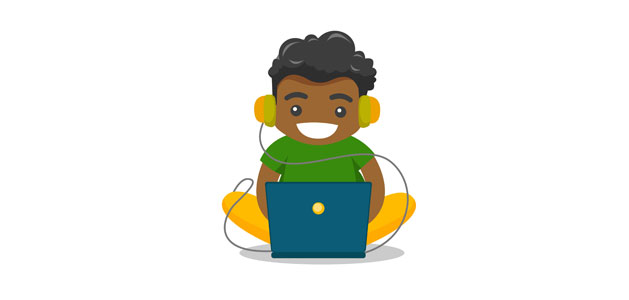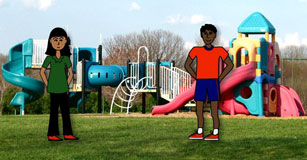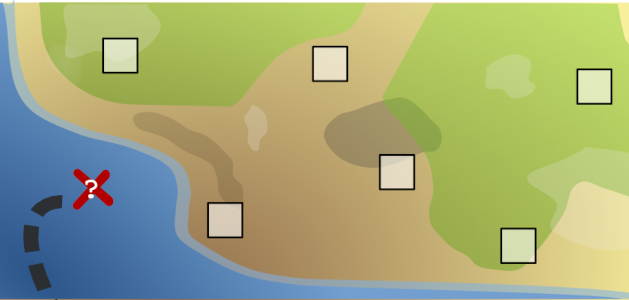10 Ways to Motivate the Undermotivated
Use choice and surprise to help kids have fun while learning

If kids had a choice, most would add more candy, recess, and video games to the school day. If asked, they would insist that the video games are educational, and that the best way to learn physics is with a basketball and a net.
While I am doubtful students will learn Common Core Standards while running at recess, there might be a way to meet them half way. What if we upped the fun in our classrooms?
Adding elements of surprise and choice is a great way to motivate the unmotivated. Here are ten strategies to consider:
1. Make time for music
In my classroom, every Monday is “Motown Monday” courtesy of the fun, upbeat motown music that I play as my students enter in the morning. Tuesday through Thursday they listen to classical piano music CDs, which calms them and helps them settle into their morning routine. Friday is their favorite music day: the “2013 Grammy Nominees” CD is their absolute favorite.
Good classroom behavior keeps the music playing. Problem behaviors make the music go down or off. Playing music gives us a motivating boost every morning.
2. Mix the routine
Some days students walk into the classroom in bad moods. They know what to expect and they‘re just not in the mood to comply. On days like this, I like to switch the schedule. We‘ll start with science, which is normally at the end of the day, or move read-aloud time to the morning, or let them work together to solve a logic puzzle. It‘s a great way to get kids back on track without losing teaching time.

3. Switch-it-up
Rather than writing in our journals, some days we make a small change. We‘ll huddle on the carpet and whisper our secrets to the group. Or to liven up the class, I‘ll let kids switch where they do their work, or let them trade their pencil for a pen. A small change can boost motivation levels.
4. Change your location.
“Location, location, location” isn‘t just about buying and selling real estate. Take advantage of different places in and around your school. If it‘s a warm day, learn outside. If the weather is unfriendly, hold class in the hallway, or in another room that isn't being used at the time, such as the cafeteria, the gym, or the clinic. I once worked in a school where the roof was accessible...what a fun place to learn!
5. Add an assistant
Ask a student to volunteer to re-teach a lesson in front of the class while you “take a break” by sitting in the assistant's seat. Remember that for some students this would be more a punishment than a treat, so make sure to choose a child who would love to be in charge. You may be surprised how carefully the class listens when one of their peers presents the lesson.
6. Interject novelty
Turn up the fun! Let students choose to write with a crayon, or sit on the floor and use their chair as a desk, or pass notes telling the answer to #6 on the spelling test. Hold a competition where the winner earns a silly trinket, like a paperclip, an old shoelace, or a discarded checker piece. Require them stand on their chairs to answer math questions, and have every answer start with, “Man, I sure love math!”
7. Bring on the games
Gamification is a great way to make classwork more fun. Have students hold up yes/no cards to show opinions, use flash cards for memorization games, or play Pop Up, where they have to jump to their feet rather than raising their hands, to answer a question. Have them catch a ball to earn their turn in a conversation, or hold a spelling bee where the winner gets to bowl for his team on Wii Sports.
8. Vary the noise level
For a change of pace, decide that answers must be whispered, or shouted, or given in a high-squeaky voice. You would never do this activity during state testing, but you might have a little fun if the classes next to yours are out of the building on field trips.

9. Make free time fabulous
Let them draw original comics, read a magazine for fun, or play “school” by writing on the interactive whiteboard. Your goal is to get them to choose learning activities for the fun of it. They might want to write a letter to a celebrity during this time, or write a thank-you note to a staff member. They could plan, film, and direct a movie on any topic, or work on a slide show of their favorite kinds of tennis shoes. By finding an activity they are excited about, students are more likely to continue their projects at home, too.
10. Rethink your rewards
Need to reward your students? Rather than giving them candy or free time, ask if they‘d like to hear a funny story from your childhood. Or maybe they can earn a performance from the principal, the librarian, or one of the lunch ladies. One year a first-grade class asked to earn a drum concert by the custodian who was a drummer. He agreed, and it was a show they remember to this day.
Keep in mind that sticking to a routine helps kids feel secure. Wait until the routine is set before you start tinkering. Don't twist the whole day into something unrecognizable; rather, add one novelty at a time, every now and then, to ratchet up the fun and excitement.
Trust me, there's going to be a lot of laughing if you try some of these ideas. Laugh along with your students, then say, “Ok. Let‘s get back to learning.” Remind them that you can only add silly/fun/different games in the classroom if they can get back to work afterwards.
Even with twenty-five years in the classroom, sometimes my antics get learning off track. I accept this as part of my teaching style. If you can‘t regain control of your classroom after silliness, switch the activity to silent reading, or give a pop quiz, or ask if they need a minute of silence.
Helping kids have fun while learning might be one of the most important things we teach them. Those who enjoy learning have a better chance of becoming life-long learners, a lofty goal for all of us.














